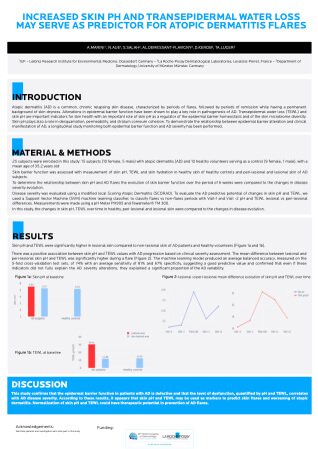
INTRODUCTION
Atopic dermatitis (AD) is a common, chronic relapsing skin disease, characterized by periods of flares, followed by periods of remission while having a permanent background of skin dryness. Alterations in epidermal barrier function have been shown to play a key role in pathogenesis of AD. Transepidermal water loss (TEWL) and skin pH are important indicators for skin health with an important role of skin pH as a regulator of the epidermal barrier homeostasis and of the skin microbiome diversity. Skin pH plays also a role in desquamation, permeability, and stratum corneum cohesion. To demonstrate the relationship between epidermal barrier alteration and clinical manifestation of AD, a longitudinal study monitoring both epidermal barrier function and AD severity has been performed.









